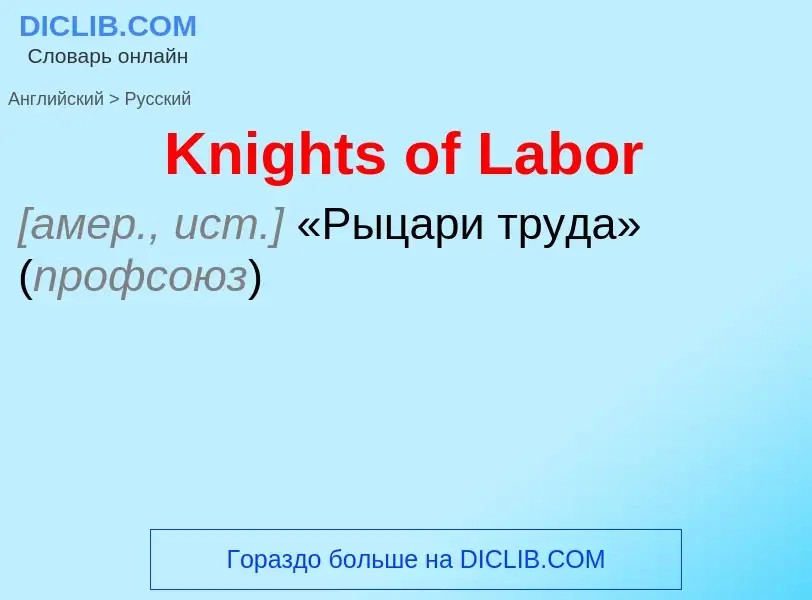Translation and analysis of words by ChatGPT artificial intelligence
On this page you can get a detailed analysis of a word or phrase, produced by the best artificial intelligence technology to date:
- how the word is used
- frequency of use
- it is used more often in oral or written speech
- word translation options
- usage examples (several phrases with translation)
- etymology
Knights of Labor - translation to russian
Рыцари труда (ранняя форма профсоюзного движения в США)
медицина
родовозбуждение
Definition
.
Wikipedia

Knights of Labor (K of L), officially Noble and Holy Order of the Knights of Labor, was an American labor federation active in the late 19th century, especially the 1880s. It operated in the United States as well in Canada, and had chapters also in Great Britain and Australia. Its most important leader was Terence V. Powderly. The Knights promoted the social and cultural uplift of the worker, and demanded the eight-hour day. In some cases it acted as a labor union, negotiating with employers, but it was never well organized or funded. It was notable in its ambition to organize across lines of gender and race and in the inclusion of both skilled and unskilled labor. After a rapid expansion in the mid-1880s, it suddenly lost its new members and became a small operation again. The Knights of Labor had served, however, as the first mass organization of the white working class of the United States.
It was founded by Uriah Stephens on December 28, 1869, reached 28,000 members in 1880, then jumped to 100,000 in 1884. By 1886, 20% of all workers were affiliated, nearly 800,000 members. Its frail organizational structure could not cope as it was battered by charges of failure and violence and calumnies of the association with the Haymarket Square riot. Most members abandoned the movement in 1886–1887, leaving at most 100,000 in 1890. Many opted to join groups that helped to identify their specific needs, instead of the KOL which addressed many different types of issues. The Panic of 1893 terminated the Knights of Labor's importance. Remnants of the Knights of Labor continued in existence until 1949, when the group's last 50-member local dropped its affiliation.


![Terence Powderly]] (1890, age 41), Grand Master Workman of the Knights of Labor during its meteoric rise and precipitous decline. Terence Powderly]] (1890, age 41), Grand Master Workman of the Knights of Labor during its meteoric rise and precipitous decline.](https://commons.wikimedia.org/wiki/Special:FilePath/Powderly-terence-1890.jpg?width=200)

